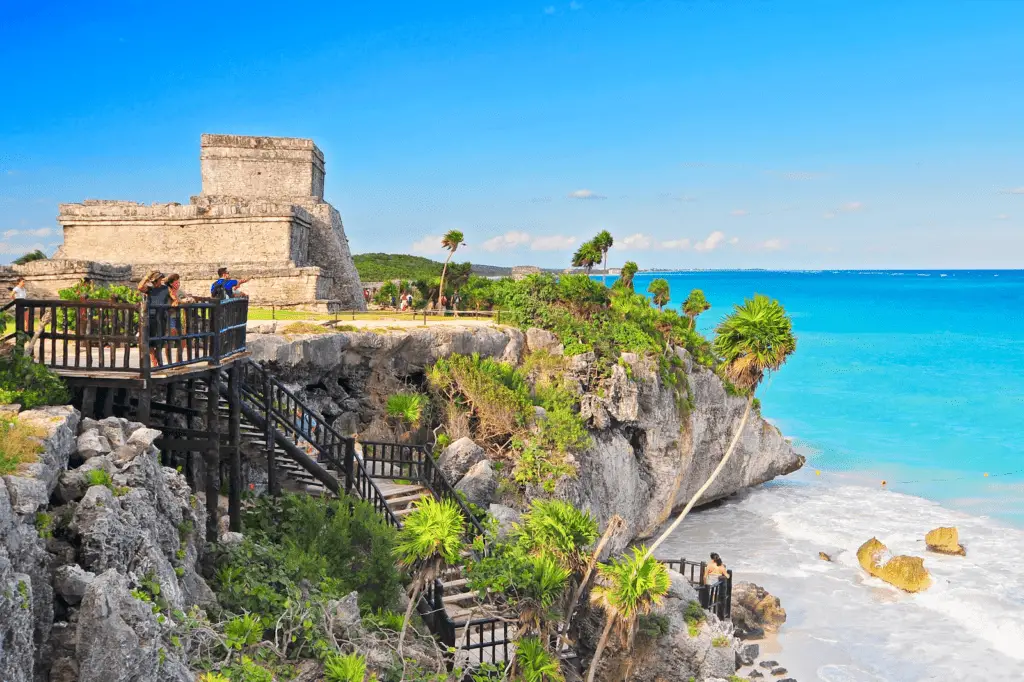Mexico’s fascinating history can be explored across the country, from Spanish colonial cities with stunning architecture and cathedrals to ancient ruins and archaeological wonders.
Discovering these historic sites will take you on an exhilarating journey of exploration and culture. The nation boasts stunning landscapes from northern deserts to jungle highlands and beaches with captivating sea views.
Chichen Itza
Chichen Itza is a UNESCO World Heritage Site and an absolute must-see on any trip to Mexico. Built around 1,500 years ago, this city contains some of the oldest and best-preserved Mayan ruins anywhere. Additionally, Chichen Itza served as an important center of science and culture; many buildings still showcase stone carvings that are just as rich and stunning today as they were then.
The city was founded by the Maya, who ruled Mexico from 250 BC until AD 850. Their advanced technological prowess led them to levels of civilization that rivaled ancient Egypt, Greece, and Rome in terms of astronomy, architecture/building techniques, athletes, and more.
Chichen Itza’s crowning glory is El Castillo, or Temple of Kukulcan – a majestic step pyramid cut out of the side of a mountain that adds to its grandeur. At nightfall, sound and light shows to add to its mesmerizing aura.
Another notable landmark is the Great Ball Court, an expansive complex of structures. It’s one of Mesoamerica’s largest, and its walls feature two intricate rings representing a feathered serpent.
The Great Ball Court is part of the Great North Platform complex of Mayan monuments, which also includes the Temple of the Jaguars, Tempe of Warriors, and Venus Platform.
Chichen Itza is not only home to stunning architecture, but it also boasts some remarkable artifacts. Its astronomical observatories are among the world’s greatest wonders, and some of its Maya inhabitants used mathematical prowess to craft a calendar that included celestial observations.
Chichen Itza was a major hub of commerce, boasting marketplaces filled with exquisitely crafted objects such as jewelry and pottery from around the world. These goods were brought together for exchange at Chichen Itza’s marketplaces.
Other notable Mayan artifacts include human skeletons and precious relics found in the Sacred Cenote. Priests threw these items, along with gold, jade, and other items, into this cenote at the start of their reign over the city.
The ruins are open to the public, though they can get busy during peak seasons (especially December and January). To avoid waiting in line for tickets, it’s recommended that you book one ahead of time. Alternatively, taking a tour with a local guide offers an excellent opportunity to see more of the site while learning about its captivating history.

Coba
Coba enjoyed great power during its prime, controlling farmland, trade routes, and water sources. Additionally, it boasted one of the largest pyramids on the Yucatan Peninsula: El Castillo.
Between 200 and 600 AD, the ancient Maya ruled this region of Central America. They had strong connections to other powerful city-states like Tikal and Calakmul, suggesting they likely maintained military alliances with other cities in order to maintain their dominance.
Coba offers more than just Mayan ruins to explore! Climb the Ixmoja pyramid, explore cenotes (limestone sinkholes), and even play some ball! There’s plenty to see and do in Coba!
For an even more adventurous day trip, why not consider an eco-tourism tour that includes climbing the Coba pyramid, swimming in a crystal clear cenote, and ziplining across the jungle? Plus, you’ll get to experience delicious homemade meals while meeting a friendly local family.
At this site, you can explore the history of the ancient Maya. There are dozens of stelae and altars that tell tales about conquests, dynasties, and governors.
These stelae are essential to understanding the ancient Maya culture. They served as tombs for notable individuals and were carved in stone to tell their tales.
Today, these impressive structures provide insight into the ancient Maya world. Their majestic shapes and remarkable preservation have been well preserved over time.
While at Coba, be sure to explore the spaces – ancient roads made of stone. At this archaeological site, you’ll find over 50 distinct sacbes.
If you’re feeling lazy and don’t feel up to walking a lot, renting a bicycle on the site for about $10 is your best bet. Alternatively, if you don’t feel like pedaling yourself, hire a bicycle taxi that will transport you from one site to the next.
Coba’s ruins are open daily from 8 am to 5 pm, so it’s wise to arrive early so you have ample time to explore all of its fascinating parts.

Cancun
History buffs or those simply interested in exploring Mexico’s vibrant past will find plenty to explore at Cancun. Surrounded by remnants of ancient cultures, Cancun has become one of the country’s premier historical destinations.
Cancun is renowned for its stunning beaches and luxurious hotels, but the real treasures lie within its historical ruins. Cancun boasts numerous impressive Mayan temples that date back to pre-colonial times.
Though many of Cancun’s most renowned sites are within driving distance, many travelers make a day trip out of town to witness these remarkable structures and gain insight into Mayan culture. Chichen Itza is one of the most popular archaeological sites to visit from Cancun; it contains remnants of one of the world’s most captivating cities as well as one of America’s biggest pyramids.
For something unique, Yamil Lu’um is another excellent destination to visit in Cancun. This archaeological site lies along the Hotel Zone and boasts several captivating ruins. The complex is divided into four groups: North Set, Chaak Palace, Dragon Set, and South Set.
Cancun boasts some fascinating historic ruins. El Rey Archaeological Site, named after a statue discovered here, is only a short drive away. Here you’ll find several important monuments like a king’s tomb and temple designed in Costa Oriental style that was popular along the eastern shoreline of Quintana Roo during Postclassic times.
Punta Nizuc region boasts many intriguing ruins. Uxmal, for instance, is one of the oldest and most renowned of these monuments – a UNESCO World Heritage Site featuring impressive structures as well as artwork and sculptures that give an insight into ancient Mayans’ engineering skills and architecture.
Cancun boasts several religious landmarks and significant monuments worth visiting, such as Puerta del Cielo, Iglesia de Nuestra Senora del Carmen, and Cristo Rey. Additionally, Plaza de Toros is an impressive bullring hosting regular weekly bullfights – an enjoyable way to experience Mexican culture while admiring stunning views of Cancun’s skyline.

Tulum
Tulum, located atop a 12-meter (39 ft) cliff overlooking the Caribbean Sea, is one of Mexico’s most beloved historic sites. Visitors come here from all around the world for its breathtaking views and to experience what life was like in an ancient Mayan city that once flourished.
Tulum was once a bustling port town that controlled maritime trade along the Caribbean coastline to Belize. Its walls served to keep out invaders and maintain prosperity within the city.
Although much of the city was destroyed during the Spanish Conquest, many of its structures have been preserved. Notable among them is El Castillo, a large stone pyramid that served as a watchtower for incoming ships, but there are other noteworthy buildings worth seeing as well.
One of the most remarkable sights among the ruins is the Temple of the Frescoes, featuring vibrant murals depicting scenes from Mayan mythology. Additionally, two stelae bearing hieroglyphs give visitors an insight into the city’s past.
Another noteworthy building among the ruins is the Temple of the Descending God, dedicated to Chaac, the god of rain and fertility. Its facade features carvings of its deity as well as a bowl for offerings or sacrifices made in his honor by worshippers.
For an in-depth view of the history of this city, consider taking a tour. They may not be cheap, but they provide an extensive overview of its captivating past.
Booking a guided tour that incorporates other activities in the area, like swimming in a cenote or ziplining, makes for an entertaining and educational day.
